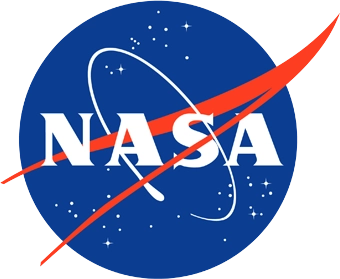Science News
Showing 1 to 24 of 670.
Antarctic Sea Ice Saw Its Third-Lowest Maximum
2025.11.17
Sea ice around the southernmost continent hit one of its lowest seasonal highs since the start of the satellite record.
Arctic Sea Ice Ties for 10th-Lowest on Record
2025.09.19
Satellite data show that Arctic sea ice likely reached its annual minimum extent on September 10, 2025.
Arctic Sea Ice Reaches Annual Low
2025.09.17
With the end of summer approaching in the Northern Hemisphere, the extent of sea ice in the Arctic shrank to its annual minimum on Sept. 10, according to NASA and the National Snow and Ice Data Center
Greenland Ice Sheet Gets a Refresh
2025.09.13
A moderately intense season of surface melting left part of the ice sheet dirty gray in summer 2025, but snowfall has since freshened its appearance.
A Giant Iceberg’s Final Drift
2025.09.11
After a long, turbulent journey, Antarctic Iceberg A-23A is signaling its demise as it floats in the South Atlantic.
Greenland’s Bejeweled Ice Sheet
2025.07.12
In early July 2025, around halfway through the island’s annual melting season, blue meltwater ponds dotted the western side of the massive ice sheet.
Seasonal Breakup in the Amundsen Gulf
2025.06.16
Sea ice in the gulf, the gateway to the Northwest Passage, is fracturing and drifting westward into the Beaufort Sea.
Signs of the Season in Pine Island Bay
2025.04.16
A major embayment in West Antarctica saw new sea ice growth in autumn 2025 amid older sea ice that had survived the austral summer melt season.
Winter Sea Ice Reached New Lows in the Arctic
2025.04.04
The region’s ice extent on March 22, 2025, was the lowest maximum observed in the satellite record.
Antarctic Sea Ice Plunged in Summer 2025
2025.04.02
The region’s ice extent on March 1 tied for the second-lowest minimum observed in the satellite record.
NASA, NSIDC Scientists Say Arctic Winter Sea Ice at Record Low
2025.03.27
Winter sea ice cover in the Arctic was the lowest it’s ever been at its annual peak on March 22, 2025, according to NASA and the National Snow and Ice Data Center (NSIDC) at the University of Colorado, Boulder.
Low Ice in the Gulf of St. Lawrence
2025.03.21
The body of water off eastern Canada is one of the southernmost locations where Arctic sea ice forms, but its extent in winter 2024-2025 was well below normal.
A Year in Review: New Earth Discoveries in 2024
2025.03.18
Each year, the Earth Science Division’s Research and Analysis Program combines space, airborne, and ground-based observations with data processing from high-tech computer models and algorithms to uncover new things about the Earth. Explore some of our top discoveries of 2024.
Glacial Losses in the Swiss Alps
2025.03.14
Images bridging four decades show where Switzerland’s largest glacier and its neighbors have been losing ice.
New Antarctic Iceberg Speeds Off
2025.02.24
Iceberg A-84 has spent part of the Southern Hemisphere’s summer zipping along West Antarctica’s coastline.
Meltwater Ponds on the Amery Ice Shelf
2025.01.21
Blue puddles of water were visible atop this East Antarctic ice shelf after periods of record melting.
Annual Science Conference to Highlight NASA Research
2024.12.06
NASA researchers will present findings on Earth science, planetary science, and heliophysics at the upcoming American Geophysical Union (AGU) 2024 annual meeting in Washington, DC, beginning on Monday, Dec. 9.
Antarctic Icebergs Show Their Colorful Undersides
2024.11.16
The blue underbellies of icebergs were spotted floating near the Amery Ice Shelf.
Streaming Snow and “Sea Smoke”
2024.10.28
Visible atmospheric phenomena revealed springtime winds roaring over Antarctica’s Pine Island Glacier.
Today’s Glacial Retreat is a Recent Phenomenon
2024.10.24
Alpine glaciers around the world were advancing as recently as 1990. Now they’re melting fast.
NASA Goddard Hosts Former VP Al Gore to Mark 10 Years of DSCOVR Mission
2024.10.17
Environmentalist and former Vice President Al Gore visited NASA’s Goddard Space Flight Center in Greenbelt, Maryland, on Oct. 16, 2024, to commemorate the upcoming 10th anniversary of the DSCOVR (Deep Space Climate Observatory) mission.
Arctic and Antarctic Sea Ice Approached Historic Lows
2024.10.17
Sea ice in the Arctic continued a decades-long downward trend in its minimum summer extent, while sea ice around Antarctica saw meager winter growth in 2024.
Arctic Sea Ice Near Historic Low; Antarctic Ice Continues Decline
2024.09.24
Arctic sea ice retreated to near-historic lows in the Northern Hemisphere this summer, likely melting to its minimum extent for the year on Sept.11, 2024, according to researchers at NASA and the National Snow and Ice Data Center (NSIDC). The decline continues the decades-long trend of shrinking and thinning ice cover in the Arctic Ocean.
ICESat-2 Hosts Third Applications Workshop
2024.09.17
The ICESat-2 Applications Team hosted its third Applications workshop June 3–4, 2024 at NASA’s Goddard Space Flight Center (GSFC) in a hybrid environment. A total of 113 participants registered for the workshop, representing multiple government agencies, including NASA Centers, non-profit organizations, and academic organizations.
Showing 1 to 24 of 670.
